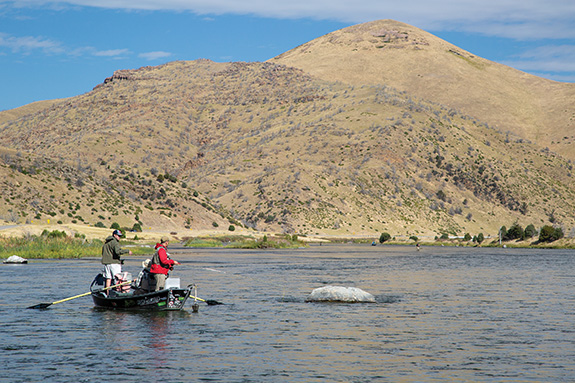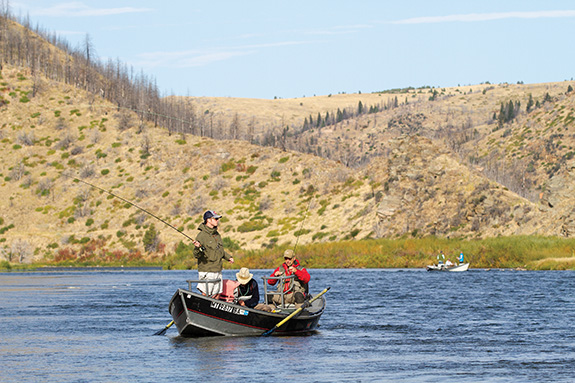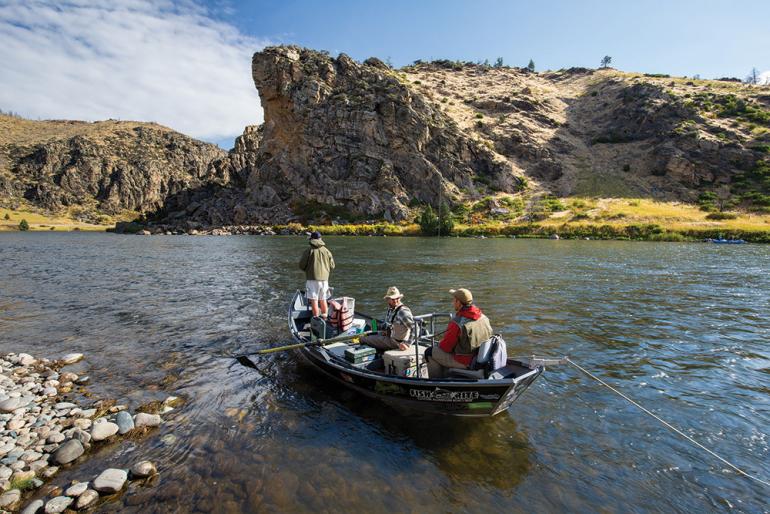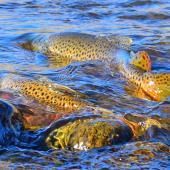A Lower Standard
Fall fishing on the lower Madison.
Fly fishermen tend to have impossibly high standards. Their tools of the trade alone are the pinnacle of angling technique, and between their ethics and their antics, it’s hard not to roll one’s eyes at the increasing pretention in this once-earthy endeavor. (Noted father of Western fly-fishing, Izaak Walton, used live bait more than flies.)
This holds true for the fly angler’s notion of worthy water, with only the choicest rivers making the cut for many a trout bum. While the Madison River will always hold a place among the finest trout streams in the world, most of the river’s recognition comes from the upper stretches—say, Three Dollar Bridge to the Channels near Ennis. That’s due in large part to the fact that summer is the most popular time to fish the Madison, and from June through August, the splash-and-giggle crowd overruns the lower river. These river revelers scare all the fish away and make achieving a decent drift all but impossible, save during the early, pre-floater hours. Additionally, the river is often too warm to fish well after Independence Day.
But what about when the crowds are gone and the daytime temps cool down? When the motor-homists return to Miami and Nashville and San Antonio? When the fish return and autumn manages to keep winter at bay? That’s when the river comes alive again. That’s when the lower Madison takes its place among the truly excellent trout streams of the world.

For starters, big browns start to get hungry right around the equinox. When the first leaves of the cottonwoods are turning bright yellow, brown-trout stomachs start rumbling, and if you’re really listening, you can almost hear the reverberation. It’s a siren song to anglers across the region, and the learned few make haste for Warm Springs, Damselfly, and Black’s Ford. These fishers are after big fish, and they bring with them big flies—think minnow and mouse imitations. Whether adrift or afoot, they’re after trophies, and every fall, a dedicated bunch pull out some truly impressive specimens.
As mentioned, the tourists are gone, making the river a place to find solitude again, and opening up close-to-town camping options that stay dry well into October and November (sometimes later). It’s during the fall that we’re reminded how beautiful the lower Madison truly is. From Bear Trap to Three Forks, it flows methodically through some of the choicest ranch land in the state, defined by wide-open spaces and amber bluffs, absent cookie-cutter subdivisions and rush-hour traffic.

Fall fishing on the lower Maddy
It’s at this time of year that the anglers’ standard lowers, and a mostly overlooked stretch of water shows its true potential. So, this fall, if you find yourself looking for an escape, look no further than the humdrum-in-summer, glorious-in-autumn lower Madison River.











